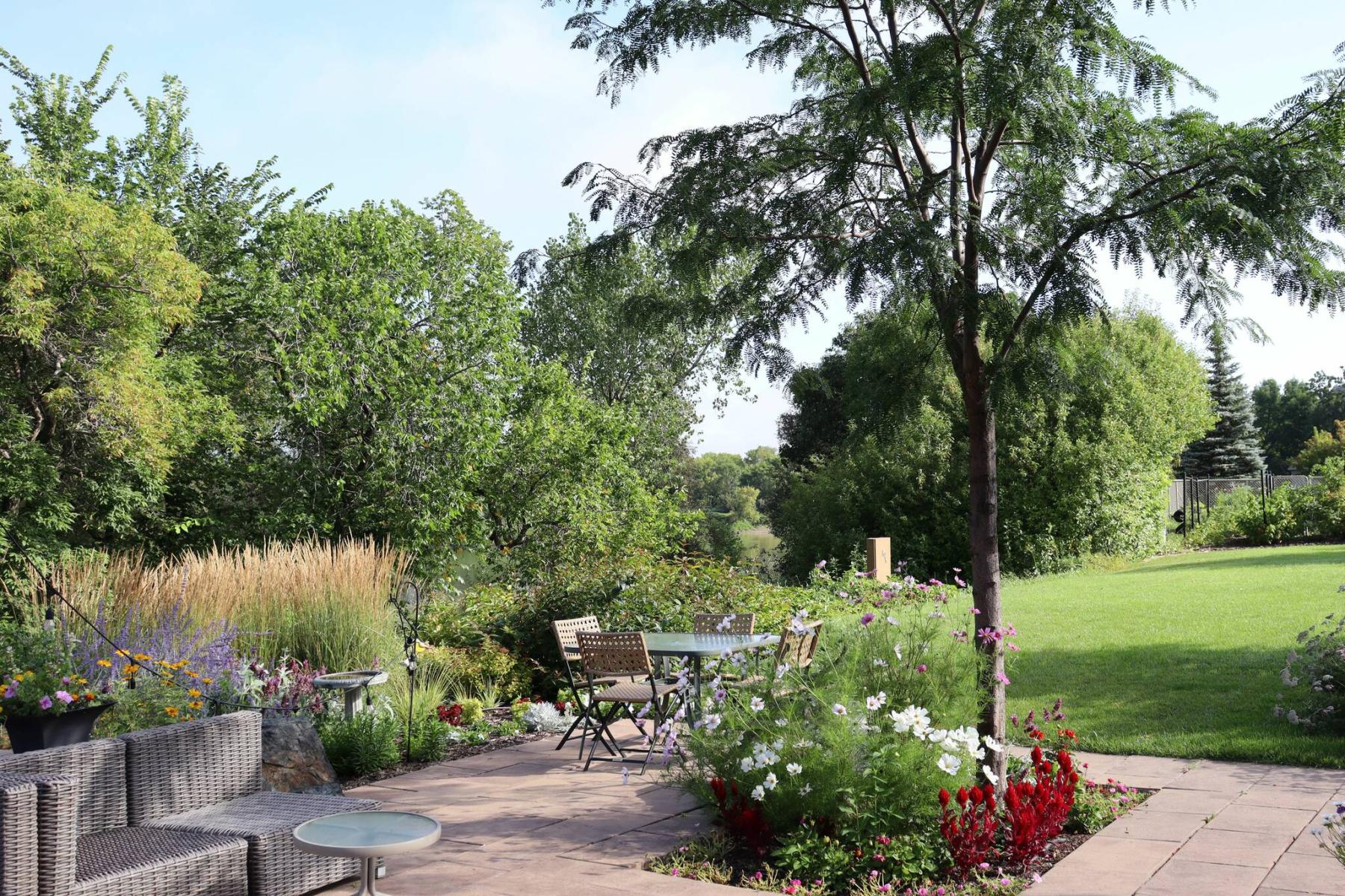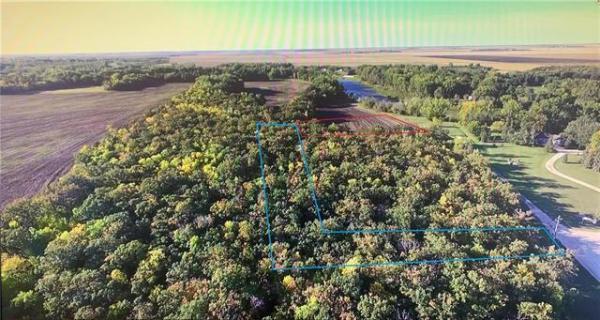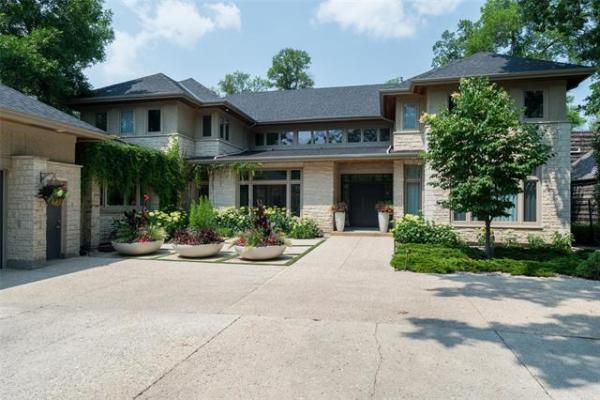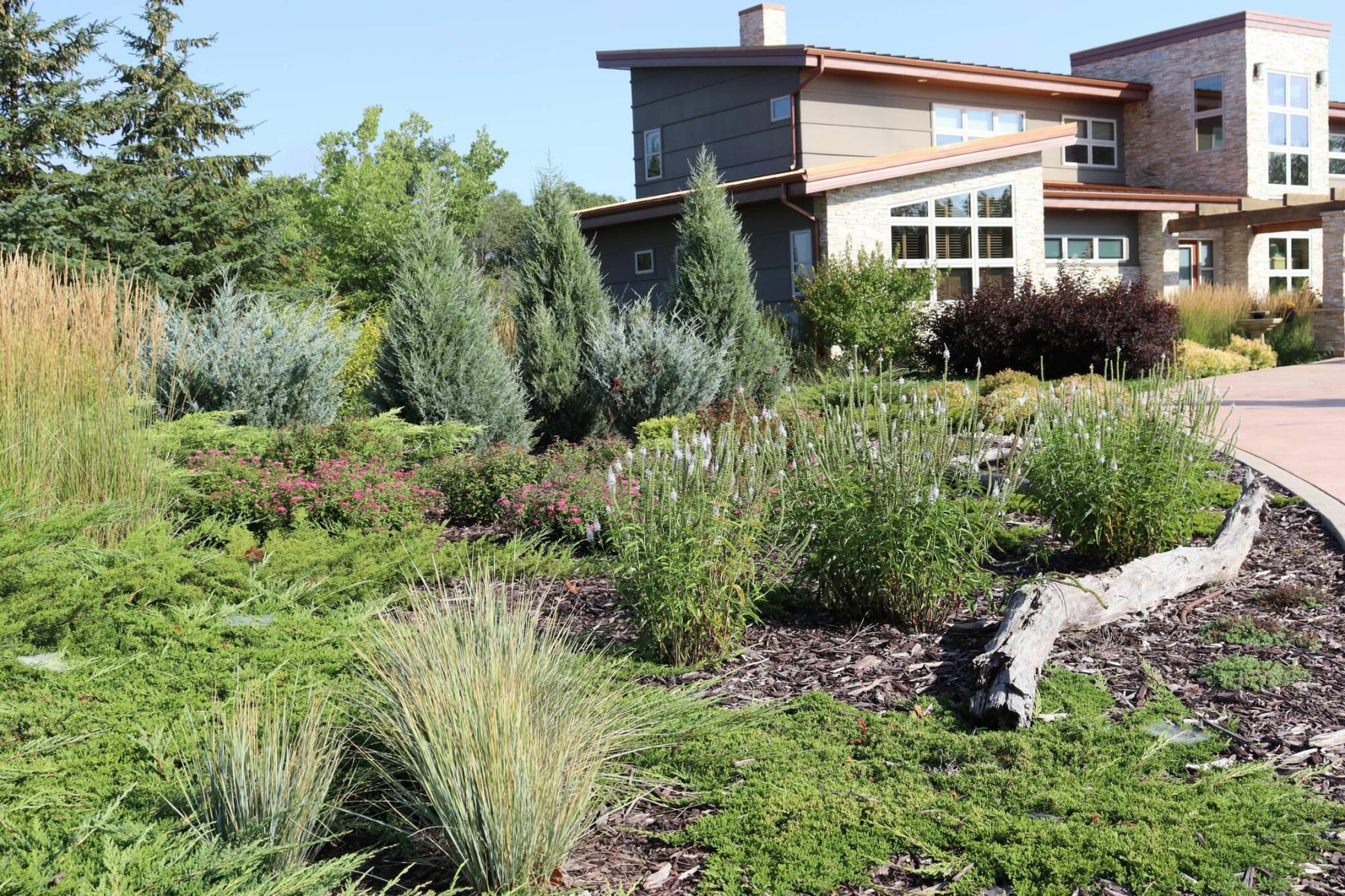
Colleen Zacharias / Free Press
Spreading junipers and ornamental grasses bring shades of blues and greens to this landscape as well as deer resistance.
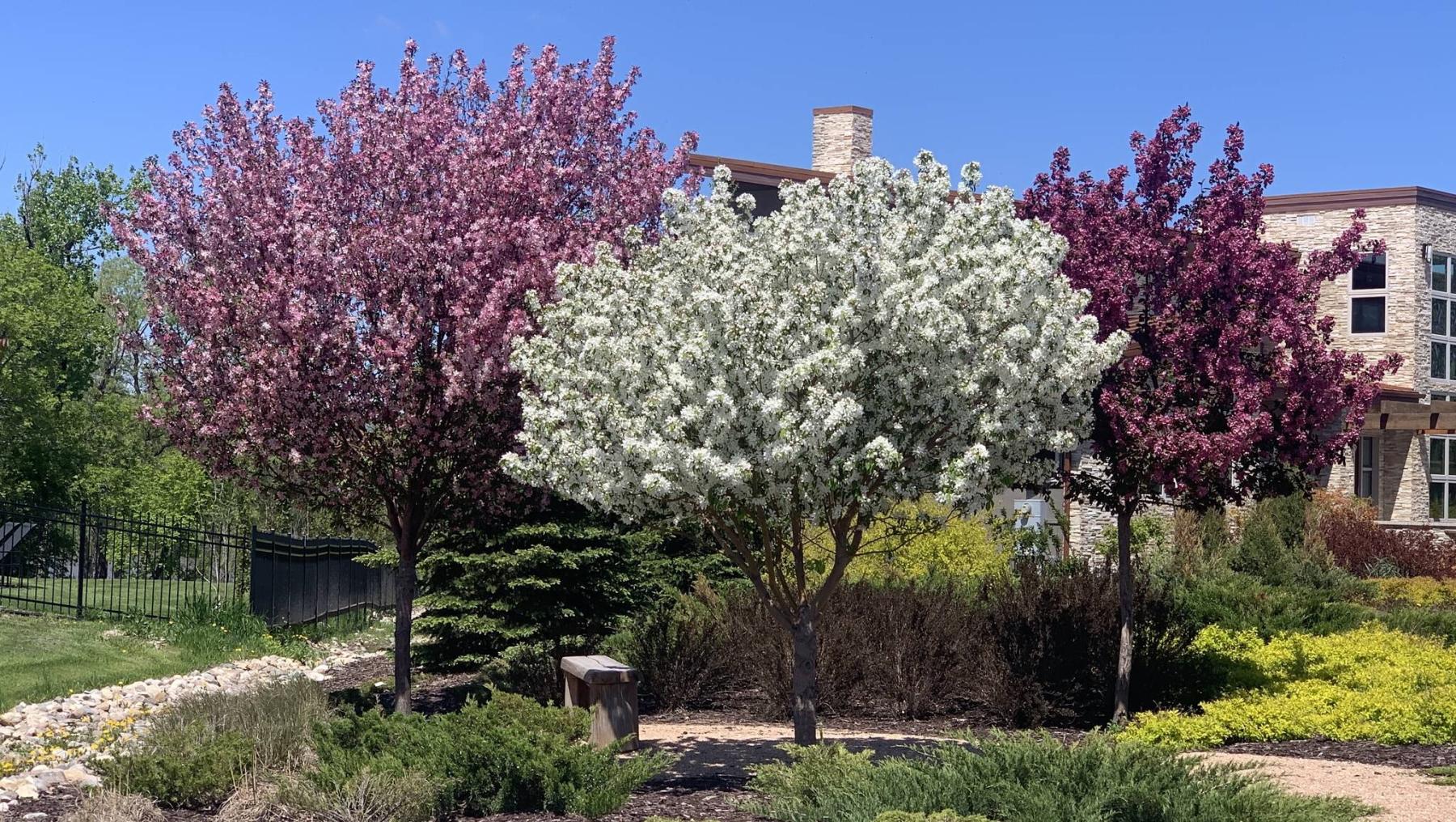
Jennifer Dumore
Thunderchild, Spring Snow, and Courageous are flowering crabapple trees that provide a colourful backdrop.
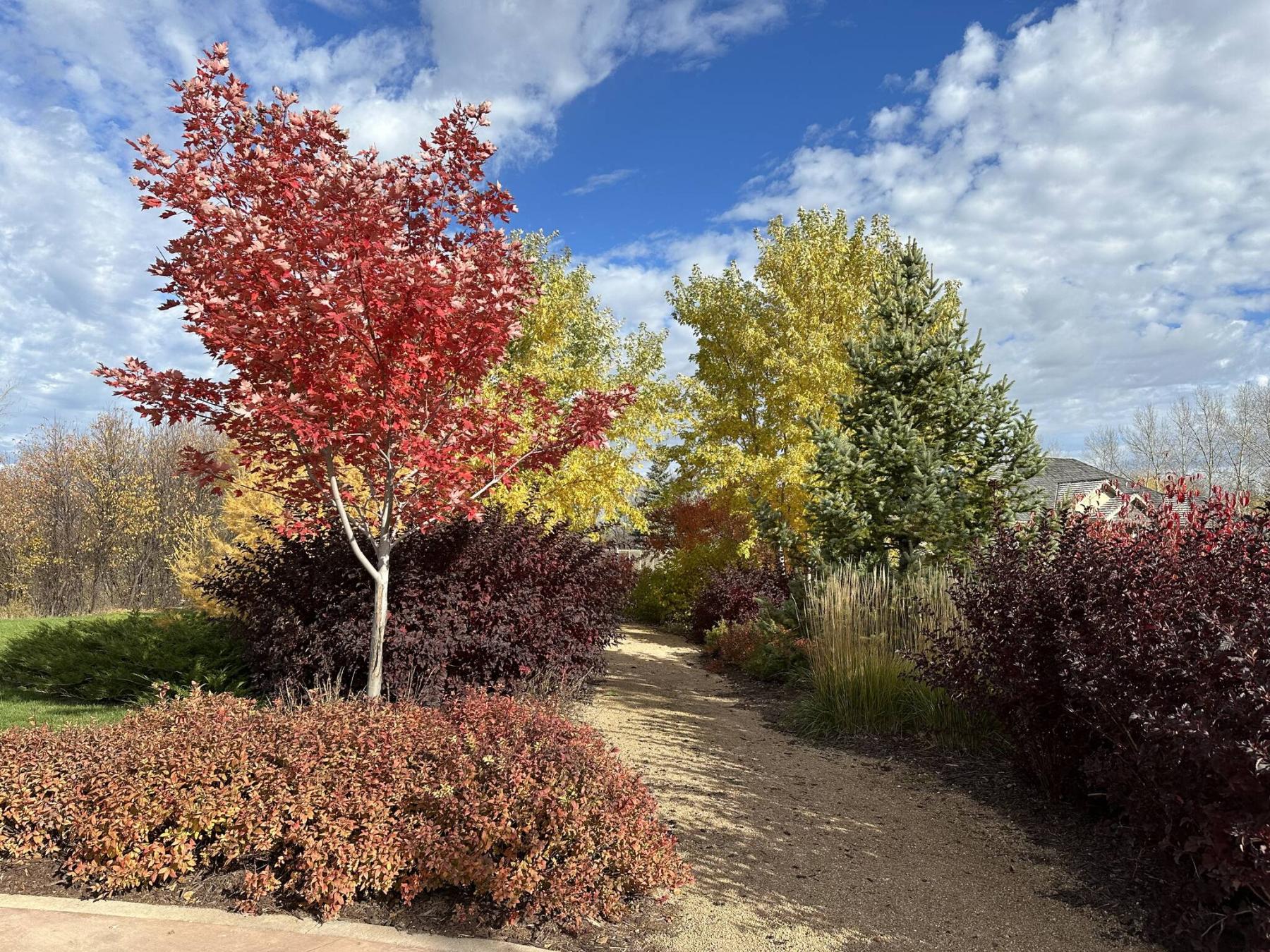
Jennifer Dumore
Colour doesn’t end with summer. Trees provide blazing colour against the autumn sky.
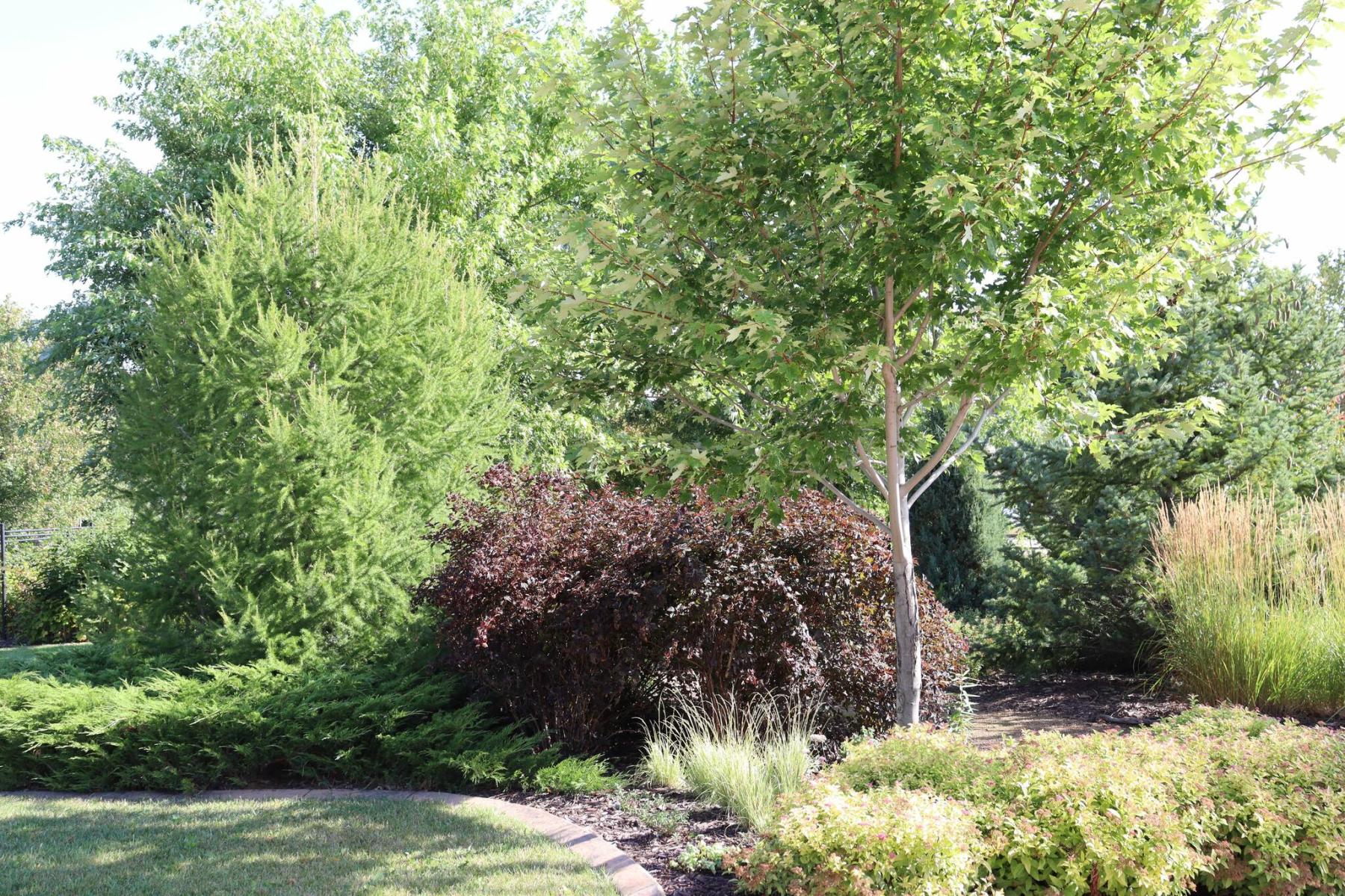
Colleen Zacharias / Free Press
Enhance your landscape with layers of leafy texture for greater resilience, benefits of diversity, and relaxed ambience.
In late summer, colour starts to fade in the perennial garden but as temperatures cool, the foliage of trees, shrubs and ornamental grasses decorate the landscape with brilliant shades of colour. Often, in a climate with a short growing season like ours, the impact of foliage colour in garden design plays a secondary role to the desire for summer’s bold yet fleeting colour of perennial and annual flowers.
Tim and Jennifer Dumore decided to take a different approach. They grow plenty of flowers, but what makes their garden design so inviting and eye-catching are the colours, shapes, and textures of the rich diversity of trees, shrubs, and ornamental grasses they have planted since purchasing their 1.3-acre property 14 years ago.
“It was completely blank — there was nothing, no trees — when we moved in,” said Jennifer Dumore when I met her for a tour of her and Tim’s property in late August. Gorgeous combinations of low, spreading junipers in shades of blues and greens are planted alongside their elegant driveway entrance which is 55 metres long. The driveway is flanked by a wide bed on one side which has been planted with junipers, grasses, spirea shrubs and flowering trees and opposite, in a narrower bed, several different varieties of ornamental grasses stand like tall sentries swaying in the slightest breeze, their soft and airy seed heads glistening with dew in the morning light.
Varieties of juniperus include Savin juniper which has a vase-like shape and soft, dark green foliage along with Juniperus chinensis Gold Star with its golden lacy, ground-hugging foliage. There are also Juniperus sabina varieties such as Blue Forest which has blue-green erect branches and a low-growing habit, Arcadia with light green arching branches, Blue Danube with highly ornamental bluish-green foliage, Calgary Carpet with scale-like sprays of moss-green foliage and soft green Skandia. Bright green Juniperus horizontalis Prince of Wales is juxtaposed with Blue Prince which has intense blue foliage. Both varieties take on hues of plum purple in the winter months.
Upright junipers such as Wichita with bright, silver-blue foliage and blue-green Medora are planted closer to the house. Ornamental grass varieties that Jennifer has planted over the years include Molinia Variegated Moor grass, Calamagrostis Overdam Feather Reed grass, Deschampsia Bronze Tufted Hair grass, the lesser known but fascinating Panicum Hanse Herms switchgrass which has steely blue foliage with red tips, blue-green Little Bluestem with shades of pink, red, and copper, and of course, the essential Calamagrostis Karl Foerster with his stately, tan-golden wands of colour.
Jennifer plants in threes and fives, drawing the visitor’s eye down the length of the spacious planting beds, accented here and there with pieces of driftwood gathered from the river adjacent to their property. A backdrop of mature trees in the front yard includes spring flowering crabapples such as Spring Snow, Courageous, and Thunderchild. Spring Snow’s foliage turns yellow in the autumn. Thunderchild’s deep purple foliage turns an outstanding dark red in fall and the foliage of Courageous changes to orange.
We have not even gotten past the front door. The changing colours and incredible textures that await visitors a few steps beyond surpasses the welcoming and graceful entrance. But first, as impressive and colourful a planting scheme that Tim and Jennifer have created, why did they choose junipers, spireas, and ornamental grasses over, say, hostas, hydrangeas, and daylilies?
“We have a lot of deer here,” said Jennifer, “so when I was planning the garden I had to pick out a lot of things that the deer don’t like.” Juniper is strongly scented with pointy needles and a bitter taste. Spirea and ornamental grasses are typically both deer and rabbit resistant. That is not to say that deer might not venture to take an occasional bite or two but none of these plants are their favourites.
Another 30 metres of concrete driveway along the front of the house, accented by mass plantings of dark-leaved Ninebark shrubs and the tall, tan-coloured leaves of Karl Foerster grasses, leads to the backyard. This is where one gains the full sense of how trees, shrubs, and grasses are key to establishing not only layers of riveting colour and texture but also a landscape that offers four seasons of interest.
Tim and Jennifer’s property is characterized by a topography that is gently undulating in some areas, flat with curving paths in others, and then steeply sloped and shaded along the riverbank. There is such an incredible diversity of trees — birch, Amur maple, hackberry, Tecumseh plum, Northern Acclaim honey locust, ash, tamarack, spruce, willow, apple, to name just a few — along with shrubbery including ninebark, sumac, cotoneaster, honeysuckle,and the intriguing Pucker Up Red Twig dogwood.
“The fall colour was so beautiful last year,” said Jennifer. She and Tim enjoy walking each evening through the tree-lined pea gravel pathways carved throughout their property and down the stone steps they have built that lead to the grassy trails along the riverbank where they strive for a naturalized look with native plantings.
What struck me on my visit was not only the health and diversity of the countless trees they have planted but also the trees they nurture back to health. If deer decide to feast on a fledgling plum or juvenile columnar apple tree, Tim and Jennifer take a patient wait-and-see approach. Every tree has its own story to tell and often it is a story of overcoming adversity. “We try to plant a diversity of trees because we are worried that Emerald Ash Borer could come in and all our ash trees would be gone,” said Jennifer. “We also worry about the elms along our riverbank eventually going because of Dutch elm disease.” The diversity of woody plant material that Tim and Jennifer have installed in their landscape offers greater pest and disease resistance. Other benefits include protection from flooding, cooling shade, and relaxed ambience.
Wide swales filled with pond stones border the outside of their property but there are also narrow, rock-filled swales that wind through low-lying areas where water may accumulate. Tim and Jennifer have lined the riverbank on the edge of their property with massive boulders. “We lost 10 feet to erosion so we figured we had better add the rocks so that we can protect the rest of the trees that grow along our riverbank,” said Jennifer.
There is also a raspberry patch — four long rows of raspberries with an extensive trellis system designed by Tim, a busy dentist who makes time to spend countless hours working in the garden. Jennifer makes jam and freezes raspberries for smoothies. A nearby vegetable garden, completely fenced-in to discourage deer browsing, provides a bounty of tomatoes, potatoes, onions, eggplant, garlic, carrots, cucumbers, kale, and beans. Now comes harvest time.
This autumn, leafy textures will provide a constant palette of colour in Tim and Jennifer’s garden but it won’t end there. Trees, shrubs, and ornamental grasses contribute year-round beauty to the landscape.
colleenizacharias@gmail.com
For advice, ideas and tips to keep your outdoor and indoor plants growing, sign up to receive Winnipeg Gardener, a free monthly digital newsletter Colleen Zacharias writes for the Free Press at https://www.winnipegfreepress.com/newsletter/winnipeg-gardener.

